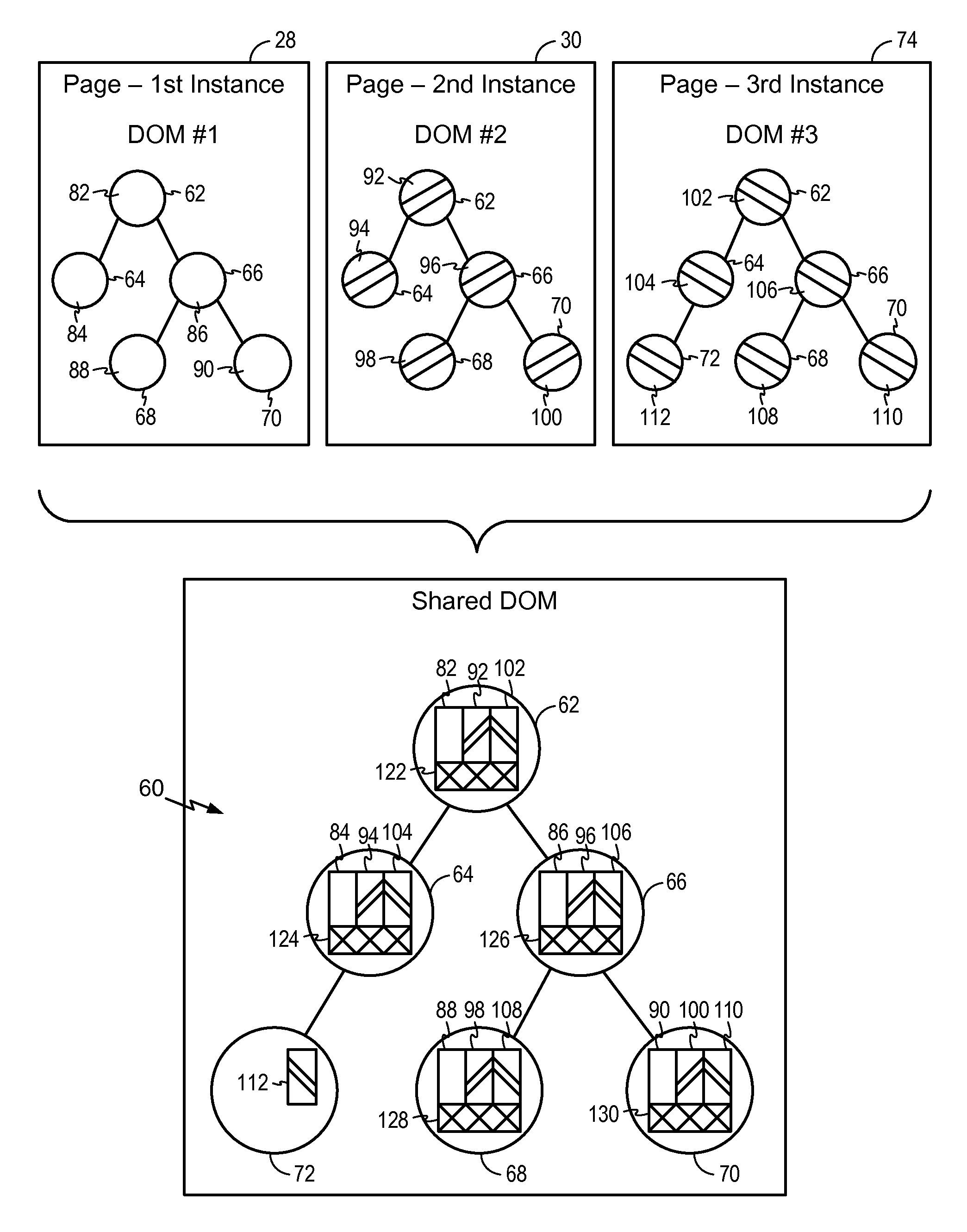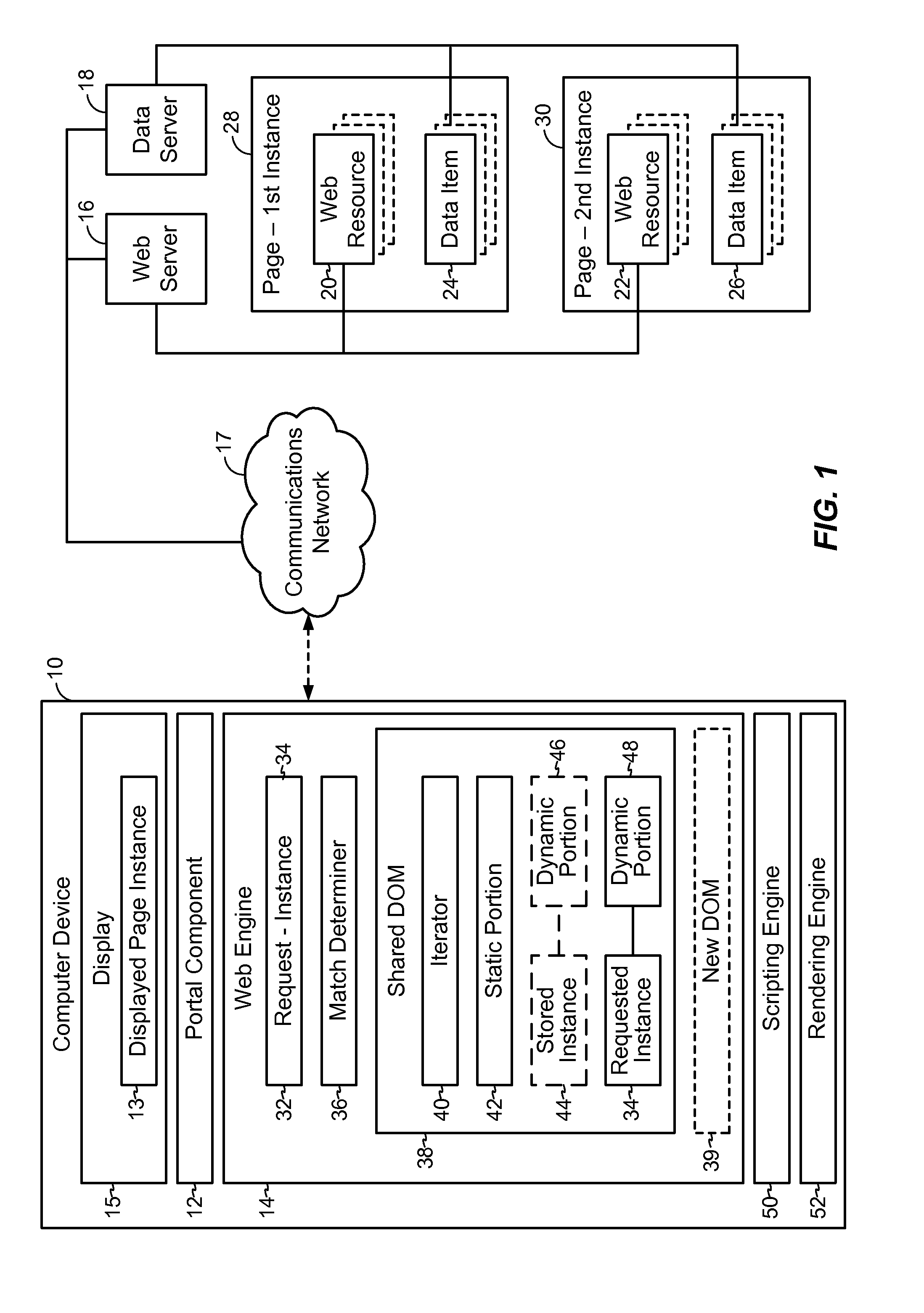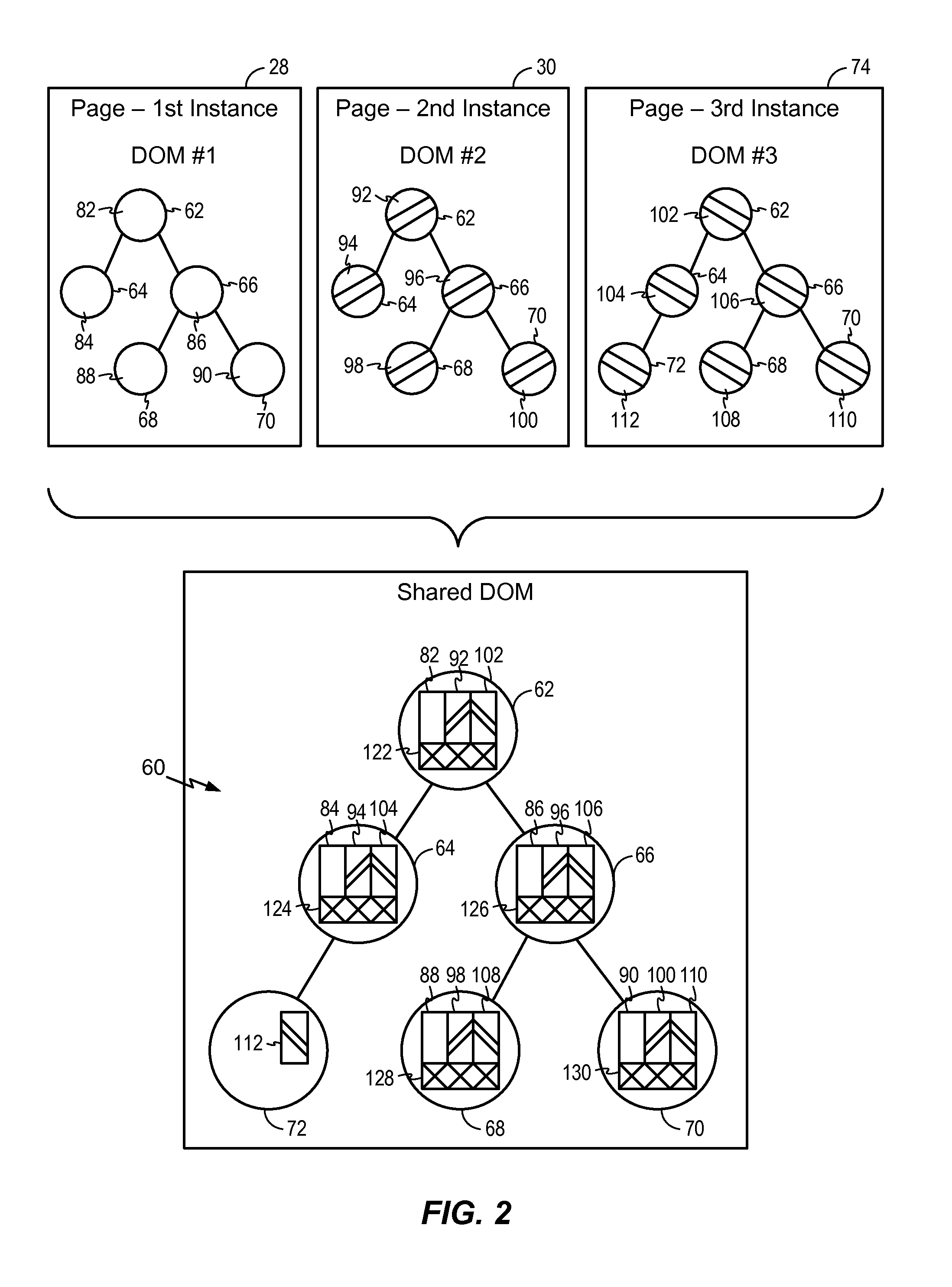Memoizing web-browsing computation with dom-based isomorphism
a web-browser and computation technology, applied in computing, instruments, electric digital data processing, etc., can solve the problems of less than satisfactory user experience and significant amount of time, and achieve the effect of improving the performance of the browser
- Summary
- Abstract
- Description
- Claims
- Application Information
AI Technical Summary
Benefits of technology
Problems solved by technology
Method used
Image
Examples
Embodiment Construction
in accordance with an aspect.
[0029]FIG. 12 is a schematic diagram of an example of an item detail page in accordance with an aspect.
[0030]FIG. 13 is a schematic diagram of another example of an item detail page in accordance with an aspect.
[0031]FIG. 14 is a schematic diagram of an aspect of an apparatus for rendering a page.
[0032]FIG. 15 is a schematic diagram of a sample DOM tree generated by a browser parsing HTML code for a requested webpage.
[0033]FIG. 16 is a schematic diagram of a sample DOM tree having calculated values stored for each node.
[0034]FIG. 17 is a flowchart of an aspect method for creating, processing, and storing the DOM tree on a first execution of a browser and / or first occurrence of a web page having an unidentified DOM structure.
[0035]FIG. 18 is a flowchart of an aspect method for creating, processing, storing, and / or retrieving portions of a DOM tree on subsequent executions of the browser.
[0036]FIG. 19 is a flowchart of another aspect method for creating, p...
PUM
 Login to View More
Login to View More Abstract
Description
Claims
Application Information
 Login to View More
Login to View More - R&D
- Intellectual Property
- Life Sciences
- Materials
- Tech Scout
- Unparalleled Data Quality
- Higher Quality Content
- 60% Fewer Hallucinations
Browse by: Latest US Patents, China's latest patents, Technical Efficacy Thesaurus, Application Domain, Technology Topic, Popular Technical Reports.
© 2025 PatSnap. All rights reserved.Legal|Privacy policy|Modern Slavery Act Transparency Statement|Sitemap|About US| Contact US: help@patsnap.com



